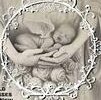Newborns are fussy, so it’s a good idea to have plenty of easy-to-wash baby clothes on hand. It’s also a good idea to register for clothes in newborn sizes because babies grow quickly. However, figuring out how many clothes to buy and what kind of clothing is best can be confusing for first-time parents.
The main types of baby clothing include onesies, jumpsuits and gowns. Onesies are usually t-shirts or bodysuits that cover only the top half of the torso and are typically used for sleepwear, but they can be worn under other clothes for cooler weather or more formal occasions. Some brands of onesies have snaps while others have zippers, which makes dressing the baby more convenient. Jumpsuits are similar to onesies but have legs and can be easily pulled up and down over the baby’s head. Some have hoods, which make them warm and comfortable to wear in cold weather. Some are reversible and can be worn either way for extra versatility. Gowns are often made from flannel or cotton jersey and are like PJs, but they can be dressed up and have a hood for warmth.
It’s important to have a few sets of matching or neutral baby clothes. These outfits can be used for photos and other special occasions, such as visiting family and friends. Having some of these special occasion outfits on hand will help reduce the amount of laundry you do in the beginning. Some new parents find that they like to keep their newborns in PJs all day, so you may want to consider getting some of these as well.
When choosing baby clothes, it’s a good idea to purchase some organic garments. Organic fabrics are made without pesticides and other chemicals, which is better for your baby’s sensitive skin. According to the National Eczema Association, babies’ skin is 30% thinner than adults’ skin, so they are more likely to absorb chemicals from their clothes.
Another thing to think about when buying baby clothes is the fabric’s durability and stain resistance. Babies get very grubby, what with milk spills, dribbles and nappy leaks, so it’s important that the baby clothing you buy can stand up to repeated washing.
In terms of sizing, it’s worth noting that different brands of clothing have a tendency to run small, large or long. It’s a good idea to check each brand’s sizing chart to see how their clothes fit, and then do some trial and error to figure out what size works best for your baby.
You’ll also want to stock up on some basic laundry supplies, such as fragrance-free detergent and fabric softeners, and a large trash bag for the diaper bin. Most importantly, remember that infants have sensitive skin and should only be washed in a gentle, non-irritating detergent. Laundry detergents that contain perfumes and harsh dyes can irritate your baby’s skin, so it’s best to avoid them. Using an organic detergent that’s free of chemical additives can help keep your baby’s delicate skin happy and healthy.
